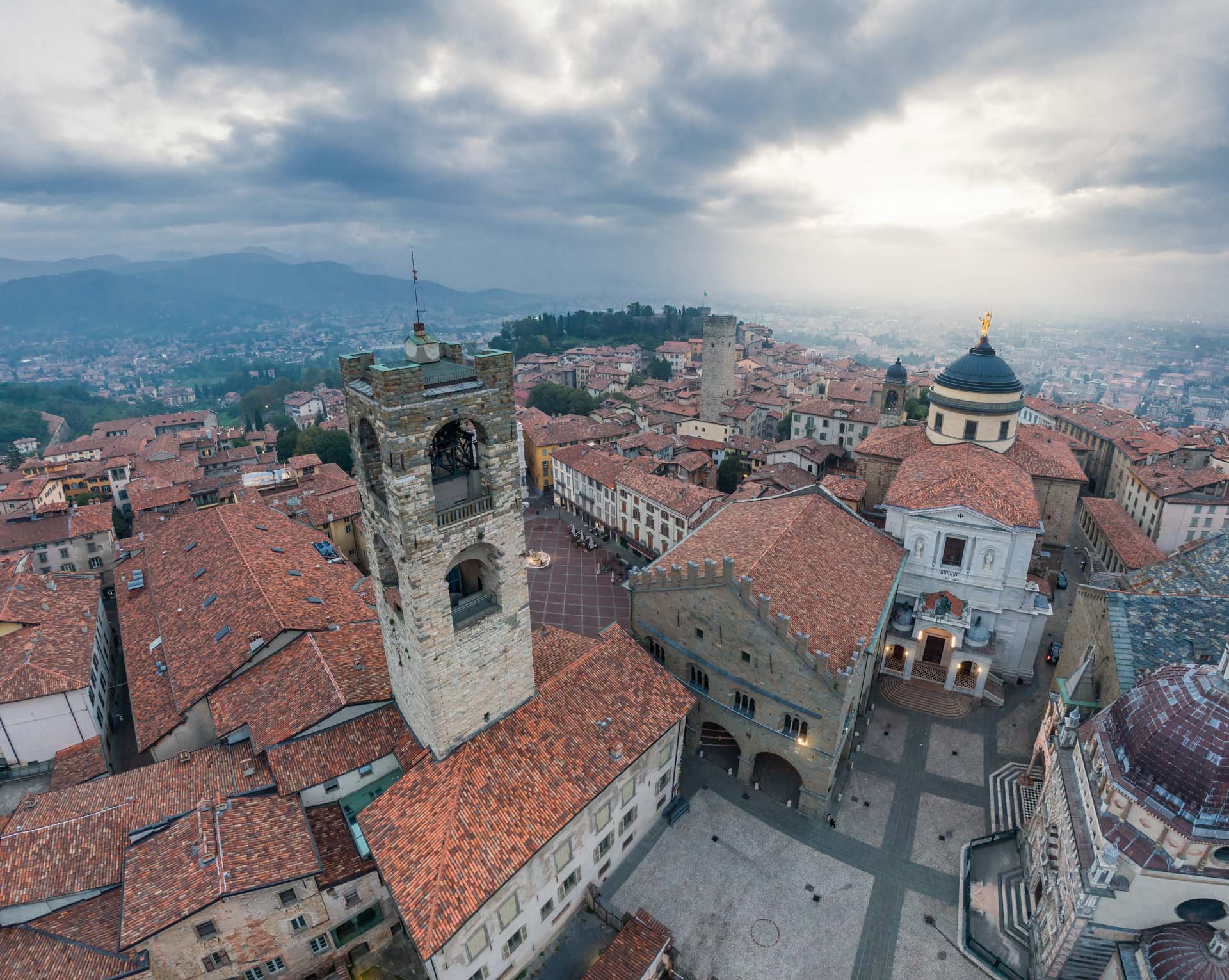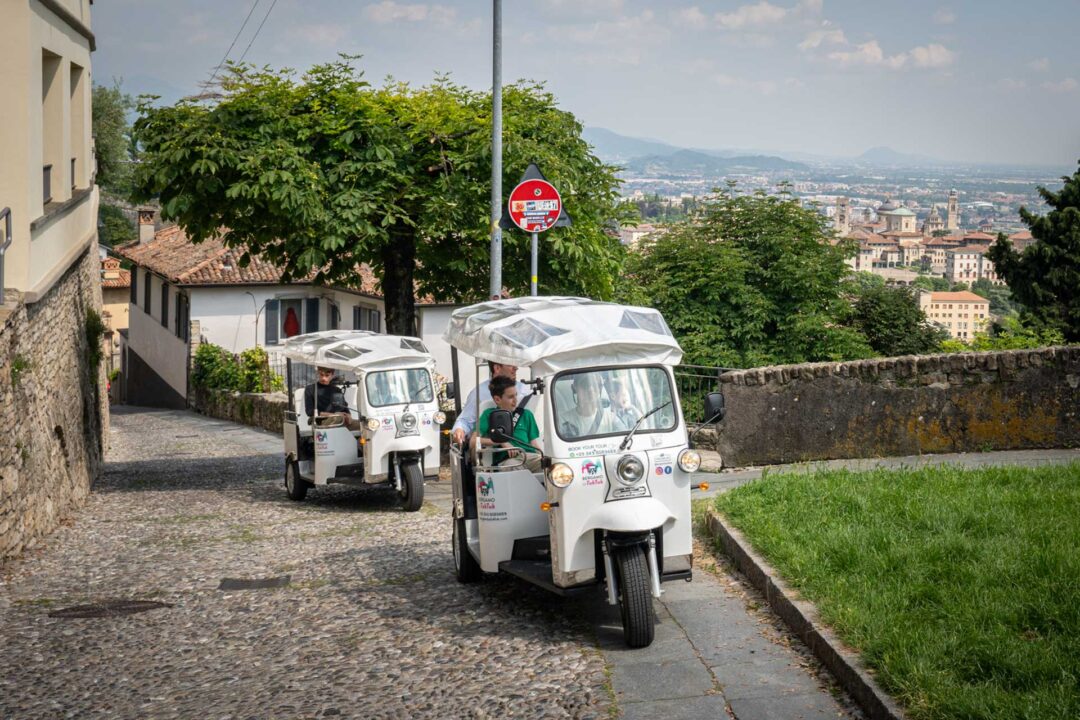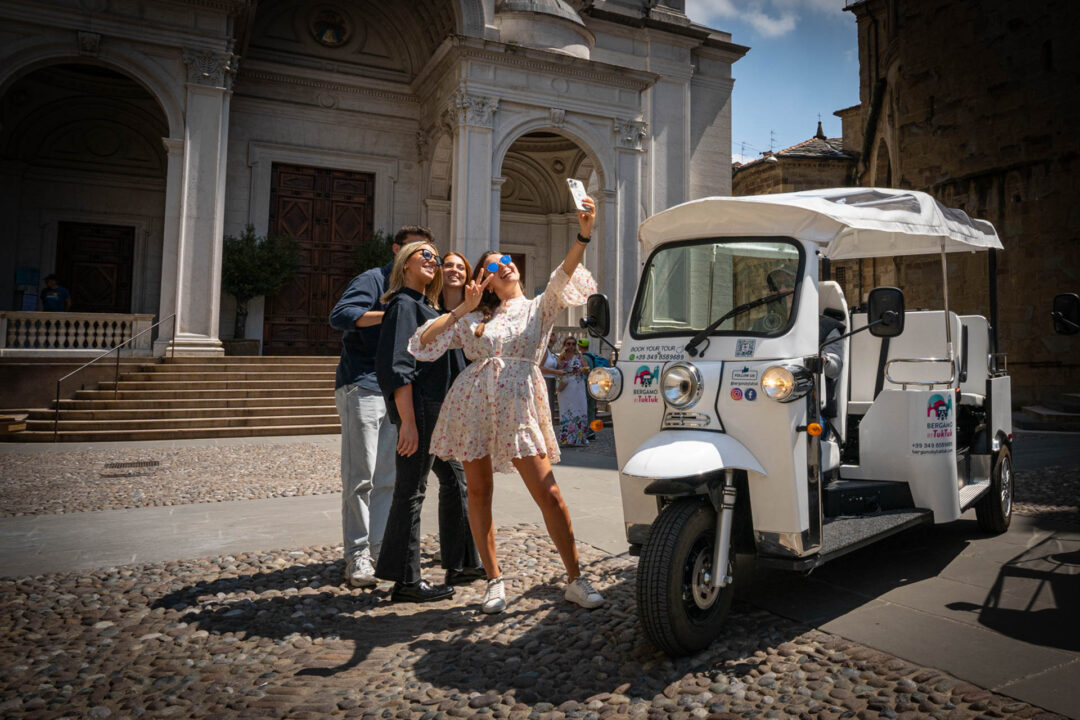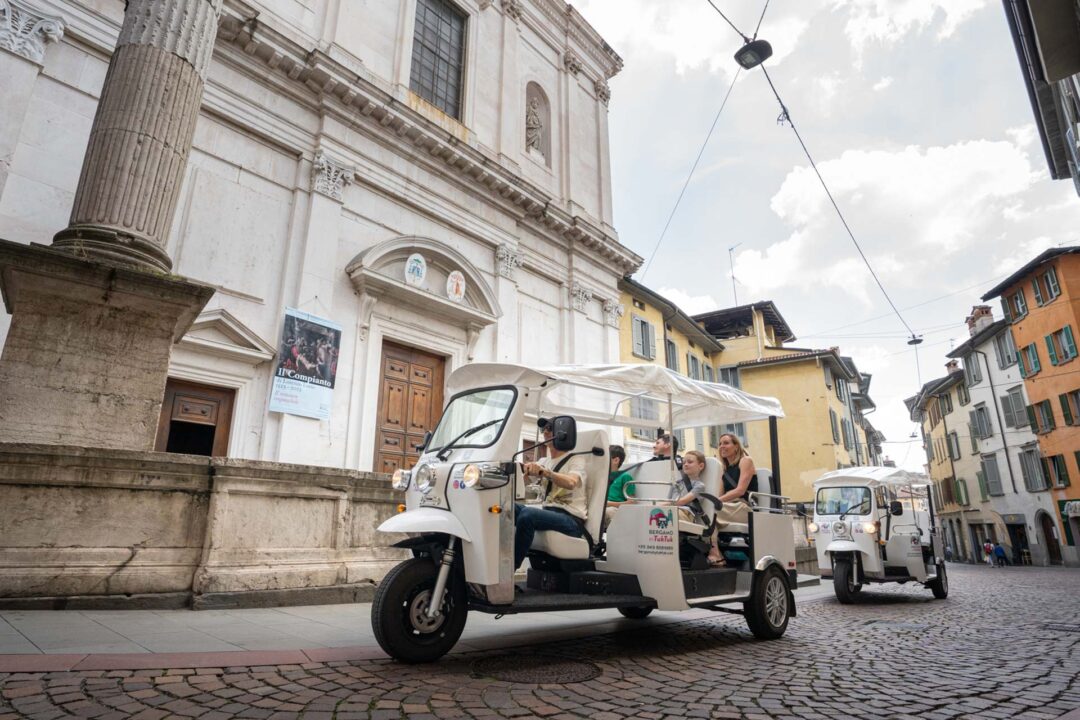
- Home
- >
- Travel Stories
- >
What to see in Bergamo: discovering the city of the Thousand

Bergamo has so much to give to its visitors, but also to the people of Bergamo themselves. Let’s discover together what to see in Bergamo in this first Bergamo By Tuk Tuk blog article.
In the coming months we will take you on a discovery tour, not only of Bergamo but also of its wonderful surroundings.
What to see in Bergamo: must-see attractions
Bergamo, located in the Italian region of Lombardy, is a city of unique beauty, divided into two distinct parts: the Upper Town, which maintains its medieval charm with its Venetian walls, and the Lower Town, more lively and modern.
What to see in The Lower Town of Bergamo
Accademia Carrara, Via XX Settembre
The first destination not to be missed is the Accademia Carrara, a famous art gallery with masterpieces by Titian, Raphael, and Botticelli, which make it one of the most important art galleries in both Italy and Europe.
Another must-see place is the shopping street par excellence: Via XX Settembre. Clothing and shoe shops, bars and restaurants frame the city’s trendiest street.
Sentierone and Donizetti Theatre
The heart of Bergamo’s nightlife, Il Sentierone is also very popular with the people of Bergamo themselves, who often meet here for an aperitif or a peaceful walk.
This important street is overlooked by the Donizetti Theatre, named after the famous composer Gaetano Donizetti, an important venue for concerts, shows and operas.
After a walk along the Sentierone, having also the opportunity to appreciate the Piacentiniano centre (a business centre designed in 1907), a visit to Bergamo must continue in the Upper Town, walking along Via Gombito and Via Colleoni (called Corsarola by the locals) to arrive directly in Piazza Vecchia, one of the most fascinating squares and the beating heart of the Upper Town…
What to see in The Upper Town of Bergamo
The Upper Town, ‘the citadel’ fortified and surrounded by 6 Km of walls, commissioned by the Serenissima and declared a UNESCO World Heritage Site in 2017, features many historical monuments and an important architecture.
You can access the Upper Town directly from the Walls and, from there, admire breathtaking views. There are four Gates that give access to the Upper Town and which, in the past, were closed when the Campanone chimed 100 times at 10 pm.
Chimes that Bergamo still has the chance to hear every evening. The four Gates that still stand today are:
- Porta San Giacomo, which is close to the funicular that departs from the Lower Town,
- Porta Sant’Agostino, the one located further east on the road to Venice,
- Porta Sant’Alessandro, which bears the name of Bergamo’s patron Saint,
- Porta San Lorenzo, the smallest of the four gates.
Piazza Vecchia – the Old Square
From the centre of the square, several historical monuments can be seen, including the Torre Civica – the Civic Tower, also known to the ‘people’ of Bergamo as the Campanone – the Big Bell, an ancient and impressive structure, 52.7 metres high, which gives those who climb its 230 steps (there is also a modern lift) an unparalleled and panoramic 360-degree view of the entire Upper Town, Lower Town and the surrounding mountains.
Campanone and Contarini Fountain
On some special days, when the sky is clear, from up there you can even see as far as Mount Monviso with its 3814 metres in the distance. A magnificent sight, especially at sunset! A special feature of the Campanone are the chimes – one hundred! – that still ring out every evening at 10 pm from this huge bell, a recurrence in memory of the evening closure of the Upper Town gates during the period of the Venetian Republic.
It is worth noting that the casting pit for this structure was actually dug at the base of the bell tower itself – due to its size, it was decided to build it directly on site, and immediately below and close to where the huge bell would later be installed, at the top of the bell tower itself. In the centre of the square you can admire another important sculpture, the Contarini Fountain, a splendid octagonal fountain in white Zandobbio marble, one of the most recognisable symbols of Bergamo.
Basilica of Santa Maria Maggiore and Palazzo Nuovo
If you keep walking around the square, you will reach the majestic Basilica of Santa Maria Maggiore with the nearby mausoleum housing Bartolomeo Colleoni, and the Battistero next to it. Gaetano Donizetti’s tomb can be found in the Basilica.
On the north-east side of the square you can see the Palazzo Nuovo, which was the seat of the municipality for almost 300 years. Today it houses the Municipal Library, named after Angelo Maj, a famous theologian and philologist. The library contains more than 700 volumes, many of which are of high historical value.
Palazzo della Ragione and Cathedral of Sant’Alessandro
Just in front of the Palazzo Nuovo, there is the Palazzo della Ragione (also known as the Palazzo Vecchio), built in the 12th century and one of the oldest municipal buildings in Italy. Between its columns, you can see the Meridiana: a sundial located under the loggia, built more than 200 years ago. Through a ray of sunlight striking the sundial, which is engraved in the marble of the floor, you can accurately note the local noon time and the date.
Crossing the loggia, you reach Piazza Duomo, where, among its many jewels, you can admire the Cathedral of Sant’Alessandro, patron Saint of the city of Bergamo. There are several cafés along the sides of the square, where you can have a coffee break, a snack or a treat while admiring the beauty of the place.
San Vigilio, Parco dei Colli and Astino Valley
From the Upper Town, you can climb further up to San Vigilio, where you can visit the Castle, an impressive stone construction that dates back to the 6th century. Around the castle, you can walk through the Parco dei Colli until you reach the wonderful Astino Valley.
The area immediately shows its abundance of historical and religious itineraries, several cycle paths and places for peaceful walks. It is here that the so-called ‘slow tourism’, i.e. tourists looking for tranquillity, can actually enjoy quiet and peace. There are many churches, monasteries and sanctuaries with a great artistic and historical value.
Another destination not to be missed is the Botanical Garden, in Colle Aperto, which features several experimental Biodiversity cultivations. Then keep walking towards Via Gombito and Via Colleoni, the shopping streets of the Upper Town, with shops and boutiques of all kinds. In these streets you will be able to find several bars, restaurants and ice-cream parlours as well.
You should also take a walk along Via Porta Dipinta, which runs from Via San Giacomo to Porta Sant’Agostino and, along the way, you should visit the Church of Sant’Andrea Apostolo and the Church of San Michele al Pozzo Bianco. Do not forget the green spaces such as the Parco Fauna Orobica and, as we mentioned earlier, the Botanical Garden.
Venetian Walls
Once you have completed this itinerary, it is absolutely necessary to go down along the Venetian Walls, from where you can admire the magnificence of the Lower Town.
If you are lucky and the sky is clear, you will be able to admire the Orobian Pre-Alps as well, and even see the spires of the Duomo in Milan!
The Venetian Walls surround the entire Upper Town, and they protected it during wars and attacks. We are not talking about a single building – they are actually six separate fortifications, built by the Serenissima in Italy. These historically significant structures were declared a UNESCO World Heritage Site in 2017.





